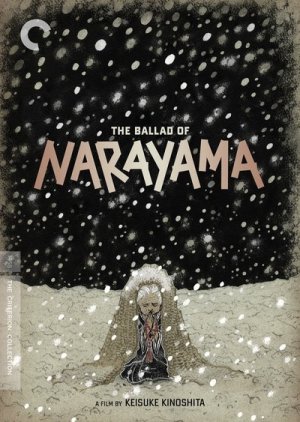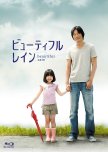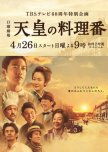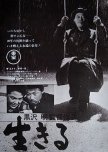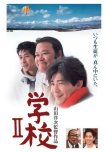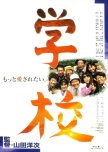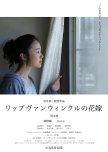
Această recenzie poate conține spoilere
From the moment the film opens with a black clad narrator in front of a curtain you know you are in for a different movie experience. The Ballad of Narayama is a colorful stylized kabuki inspired film that felt more like an elaborate stage play. New backgrounds dropped, scenes faded to black all on a meticulously created stage. A sing song narrator guided the audience through this strange land where the elderly were carried up to the mountaintop to die once they reached the age of 70. The story focused on Orin, a kind, industrious grandmother who was about to turn 70. She set her affairs to order, including finding a wife for her widower son, Tatsuhei. He loved his mother and was in no hurry to carry her up the mountain. His son, Kesakichi, on the other hand, was a greedy, lazy and obviously shortsighted young man who wanted grandma gone. Orin knew that adding to the family meant more mouths to feed bolstering her resolve to do her duty.
The ungrateful grandson created a song about his grandmother and her 33 demon teeth which the villagers picked up on and sang throughout the film. Orin, embarrassed to meet the god on the mountain with a healthy mouth took matters into her own hands.
As gracefully as Orin was facing her end, Mata, an elderly neighbor steadfastly refused to take the journey up the mountain. His family kicked him out cutting him off from their food supply.
Eventually, the new year came. Orin and her son were given the traditional rules.
1) Don’t talk on Narayama
2) Let no one see you leave
3) Never look back once dropping off the family member
Tatsuhei broken-heartedly carried his mother on the arduous journey, spurred on by not only his sense of duty and tradition but also his mother’s resolute silent acceptance leaving him no room to back out of his deadly task.
On top of the mountain the film differentiated from assisted suicide and murder. Splitting hairs when leaving someone to die of starvation and exposure.
The story highlighted group needs and tradition over the individual’s. Tragedy collided with tradition and sorrow with ceremony. Ironically, Orin was the most productive and resourceful member of her family but at 70 she was expected to make the fatal trip.
Every scene in this film was lush and lovingly created. Lighting was used in a variety of manners to highlight the mood and conversations. There were a few close-up shots of the actors but mostly they were seen at a distance as if in a play. Both dialogue and silence were used to good effect. I can’t say I enjoyed the traditional music but it fit the film perfectly.
This film’s style will not be for everyone. It took some adjustment for me to be absorbed. The obvious stage nature worked to keep me at a distance. Yet, the story did resonate as human nature and survival was put on display. The role extreme poverty played in the development of traditions, treatment of the elderly and the nature of a mother’s sacrifice were touched on. The film was beautifully shot yet it felt like there should have been an opening to question whether traditions need to be blindly accepted or perhaps reevaluated at times. It was hard to be too judgmental of the impoverished village when modern societies are not much more merciful to their elderly.
Considerați utilă această recenzie?

